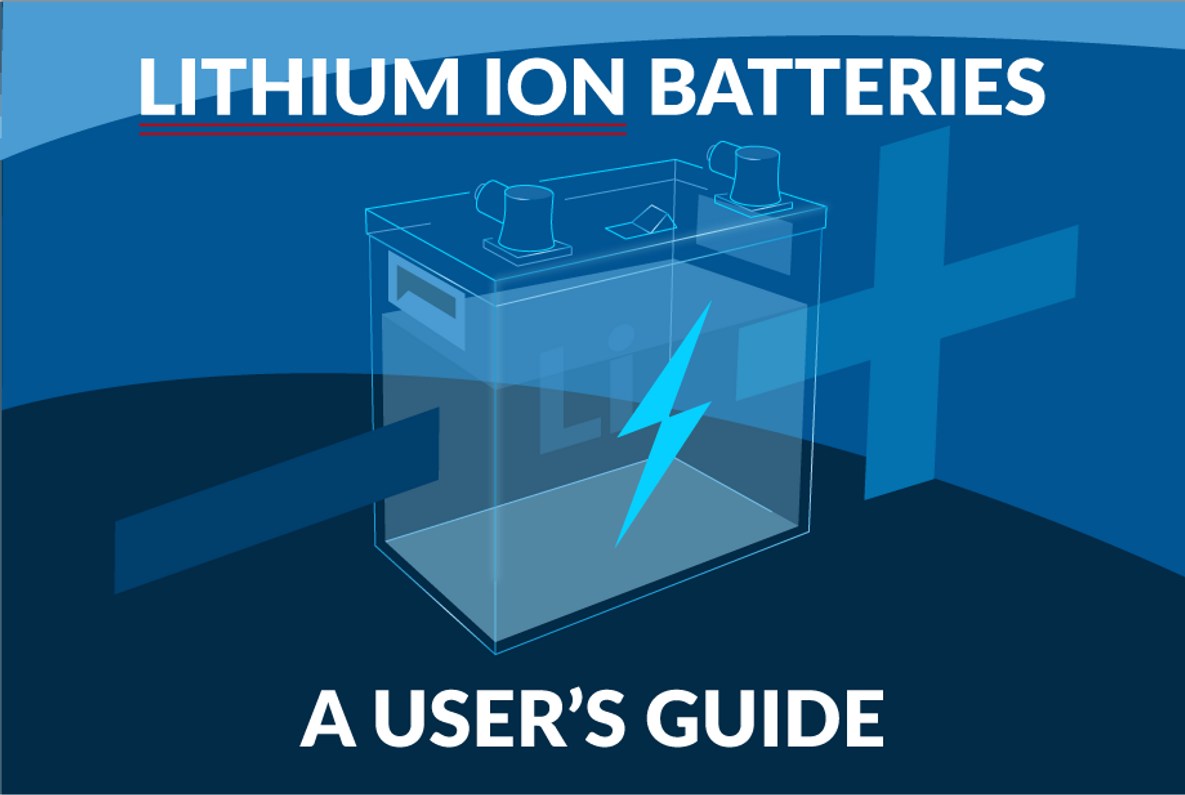Lithium Ion Battery Pros & Cons | A User’s Guide
Lithium batteries are often seen as the vanguard of the alternative energy revolution. They offer great capacity, lifespan, and dependability. Are there reasons to choose anything else? What are the pros and cons of lithium ion batteries?
While the advantages of lithium batteries are very real, other types of batteries still have their place. Especially since batteries can represent a significant investment, it pays to do thorough research before you buy your batteries.
We want to lay out clearly the advantages of lithium batteries and the impact they can have on your wind and solar system. Not only do we love selling lithium batteries, but our goal is always to create empowered and knowledgeable customers.
This guide can serve as a handy comparison tool, giving you both an at-a-glance and an in-depth reference that will inform your system planning and purchasing.
Lithium-Ion Battery Pros
Requires Less Maintenance
The thought of having to maintain a battery system can intimidate new users and those who don’t consider themselves well-versed enough yet to tackle the task. Lithium batteries offer a much easier alternative.
Flooded lead acid batteries—the type people are probably most familiar with since they’re nearly ubiquitous in motor vehicles—require careful temperature regulation and ventilation from the battery bank to the outside.
Lead acid batteries need to be periodically watered—which is basically exactly what it sounds like. Water is added to replenish what’s naturally lost from the battery’s electrolyte solution.
Owners of lithium batteries don’t have to worry about things like this. As long as the batteries are used in accordance with instructions and aren’t damaged by disasters, you’re largely good.
If flooded lead acid batteries are like owning a dog, lithium batteries are more like a cactus.
Long Life Cycle
While they may require a heftier up-front investment than other batteries, their long natural lifespan changes the big picture.
Let’s take a look at a popular, high-quality sealed AGM battery. This battery has a typical lifespan of 2,050 cycles at 50% depth of discharge (DoD)—the amount a battery can discharge divided by its total charging capacity.
It’s difficult to put battery lifespans in units of time, since your demand and charging frequency impacts this greatly, but these are very good ratings for this type of battery. Now let’s compare it to a lithium battery.
The rated lifespan of this battery is 10,000 cycles at 80% DoD. That higher depth of discharge rating means that, in addition to the naturally longer lifespan, the lithium battery charges less frequently and experiences less decay.
With the current pricing of AGM, lead acid, and lithium batteries, the cost difference between two equivalent (kWh capacity) battery banks would be approximately $1400 for quality AGM and $2500 for lithium.
However, over the 20+ year lifespan of the lithium, you would have had to replace the AGM batteries 3 to 4 times, meaning you will have saved over $3000 over the life of the system.
Users’ actual experiences will vary, but this general rubric shows you how much of a difference the lithium battery’s life cycle makes on your budget.
Little to No Charging Resistance
Resistance is a factor in battery systems that prevents discharge at full efficiency. This is not inherently bad, as it can keep downstream appliances safe. When it comes to charging the battery though, this resistance just gets in the way.
As long as you’re using a charge controller and dumping excess loads, you want your batteries to charge as quickly and efficiently as possible, and that’s exactly what lithium batteries offer you.
Spend less time charging your system, and more time living your life.
Low Weight-to-Watts Ratio
In an ideal world, you’re not going to have to pick up and move your batteries very much at all. Still, you will have to handle them at some point, and it’s always nicer to have less lifting to do.
To get the same power output from flooded lead acid batteries as one lithium battery, you would end up with 176 pounds of battery to deal with, compared to just under 80 pounds for lithium batteries.
The weight-to-watts ratio is less a practical advantage than a measurement of battery efficiency. Lithium batteries simply do more with less.
Less Space Required
Similar to above, this is another factor that make lithium batteries superior from a logistical perspective. Since you need fewer batteries to reach higher voltages, lithium batteries take up less space in your home, lodge, or cabin.
While not a make-or-break factor, it’s definitely nice to have, especially if your house has a smaller square footage. Add in the fact that you don’t need a ventilation system, and lithium batteries give you much more space to live your life.
Lithium-Ion Battery Cons
Higher Up-Front Cost
We addressed long term costs above, and while that can offset the cost of your lithium battery over the course of its lifetime, it would be irresponsible to ignore the fact that the up-front price tag can be overwhelming.
Long-term savings are great, but they don’t mean much to you if you just don’t have the money up front to justify the investment.
The good news is that, as time goes on, the prices of lithium batteries are dropping, but if you have a limited budget right now, it might make more sense to look at sealed AGM or lead acid batteries.
Temperature Sensitivity
Lithium batteries can be sensitive to temperature extremes, particularly cold temperatures below 32°F. Charging lithium batteries when they are at or below this temperature may result in permanent damage to the battery.
While many batteries come with internal heating systems, those systems can drain a battery quickly. If you location has the potential for long periods of cold weather, we recommend storing the batteries in a climate controlled area for best performance.
Shipping
You may be aware of the overheating problems some early lithium batteries had. While the technology of the batteries has greatly improved to address this, airline and shipping regulations have been slow to keep up.
Airlines require expensive protective measures for lithium batteries and generally limit the number of batteries they’ll accept as cargo.
This means that these batteries are usually shipped via freight, which is more expensive and takes longer.
Conclusion
We’re big believers in lithium-ion batteries. They’re potential game-changers when it comes to long-term alternative energy storage. We also believe in being transparent about the shortcomings of technology we love.
While there are real disadvantages to lithium-ion batteries, we believe that for many of our customers, the benefits outweigh these drawbacks. You know your goals and circumstances best, but hopefully we can help you make an informed decision.
FAQ
How long will a lithium battery last?
It’s more informative to look at the lifetime cycles of a battery than to estimate years of use. But to get a clearer idea of what that means for a median user: this SimpliPhi lithium battery is rated for 10,000 cycles and has a 10-year warranty.
That’s not a 1-to-1 correlation, but it can be a useful ball park for planning the lifespan of your system.
Will lithium batteries get less expensive?
They have over the last several years, so it’s reasonable to assume they will continue to do so. Supply chain and other issues may cause temporary changes, but the general trend is a steady decrease in lithium battery prices.
Should you keep lithium batteries fully charged?
No, lithium batteries work best when they are neither fully charged nor discharged, but rather left with a small amount of headroom either way.
Being fully charged or discharged means the lithium ions are concentrated solely on one side of the battery, which causes more wear than if there were some ions on both sides.
Recent Posts
-
Wind Turbine for Cabin | Alternative Energy for Remote Homes
Remote homes, whether cabins, hunting lodges, or vacation homes are excellent places to implement al …Dec 8th 2022 -
Lithium Ion Battery Pros & Cons | A User’s Guide
Lithium batteries are often seen as the vanguard of the alternative energy revolution. They offer …Nov 7th 2022 -
Battery Bank Configuration | The Wind & Solar Handbook
Your battery bank is, in many ways, the beating heart of your wind and solar system. Your panels and …Oct 19th 2022




